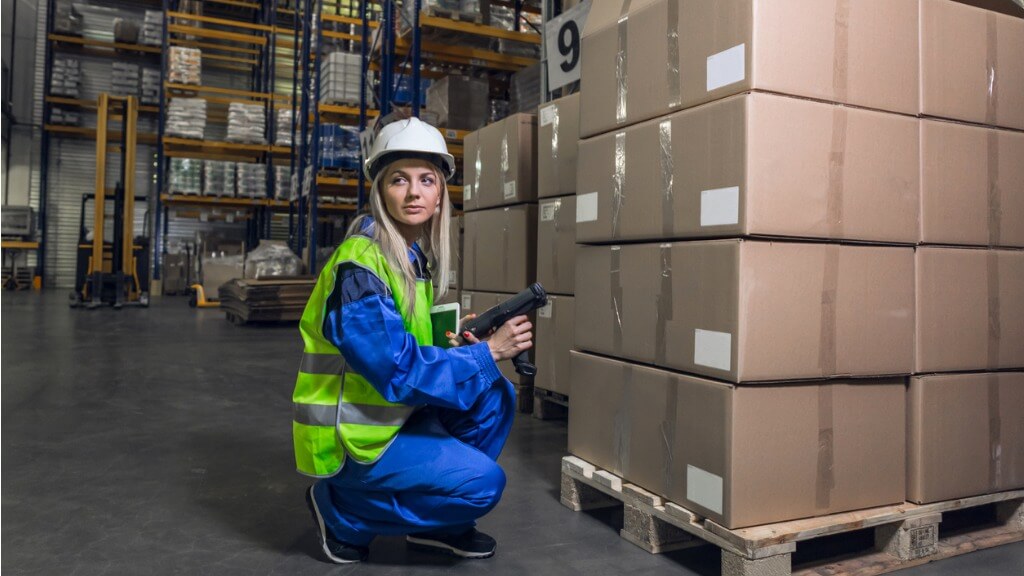
Warehouse automation refers to the methods and processes of automating inventory movement into, within, and out of warehouses without or with less human help. After automation, a business can handle heavy, repetitive tasks within seconds, saving time and money.
Warehouse automation assigns heavy duties to robots. As a result, employees can have more time and energy to do other tasks—improving workplace productivity. Besides improving productivity, warehouse automation comes with countless advantages that include:
- Reduced Human Errors
Human errors are inevitable, and they are likely to cause losses and delays and might lead to customer dissatisfaction. Fortunately, once you've automated your warehouse, you don't have to worry about such things. The automation ensures human errors are eradicated or reduced significantly, saving time and money while improving warehouse efficiency and accuracy.
- Reduced Operational Costs
Warehouse automation is undoubtedly costly, but it's a more cost effective solution in the long run. Warehouse automation reduces labor and operational costs by a considerable margin. It provides fast return on investments (ROI) by creating several saving channels that include:
- Minimizing inventory errors
- Eradicating product mishandling risks
- Improved performance
- Reduced manual labor
- Optimized products handling and storage costs
The upfront cost of warehouse automation may be huge, but since the system is very useful for a long time, it guarantees more savings for the business.
- Increased Productivity
Most warehouse tasks require running back and forth throughout the day. That said, employees are bound to be tired and less productive before the end of the day. However, this isn't the case in automated warehouses. Automation system handles heavy workloads while leaving the rest for employees.
When a warehouse is automated, workers don't have to deal with measuring pallets, carting heavy loads, or receiving, sorting, or storing goods. This means employees are assigned light tasks that are unlikely to exhaust them. At the end of the day, employees experience increased productivity while running efficiently.
- Customer Satisfaction
No one wants to keep their customers waiting. You want to stock fast-moving goods immediately to avoid disappointing them. On the other hand, you need to deliver goods as soon as they're ordered to ensure your clients are happy. Without automation, it means that products might take a while to sort manually; hence you might not know when particular goods are out.
On the other hand, when a warehouse is automated, goods are sorted and stored in a systemic and timely manner; hence there are no chances of running out of goods without notice. That said, an automated warehouse has the upper hand in restocking and resupplying to keep its customers happy and satisfied.
- Enhanced Safety
Improved safety of your employees and goods is enough reason to consider automating your warehouse. Warehouse tasks are high-risk since they involve handling heavy pallets and toxic products and working in high-traffic areas, among other things. That said, accidents are bound to occur and products destroyed if excellent measures to reduce them aren't put in place. However, robots can handle tasks without fear of accidents or injuries, eliminating risks for employees and products.
- Higher Resilience
When the COVID-19 pandemic was at its peak, warehouses that already automated their operations had the upper hand since their operations weren’t entirely affected. This is because their operations were still going on through automated robots and machines.
On the other hand, social distancing, new safety rules, the lockdown, and sanitation requirements entirely affected those that were fully operated by humans. That said, automated warehouses are unlikely to stop operations during supervening events, like a pandemic.
- Reduced Processing Time
Warehouse automation fastens and reduces processing time. With a parcel dimensioner, you can automate your warehouse measurement process and quickly and accurately take parcels' dimensions, images, and weight within no time. This technology comes in handy when dealing with thousands of parcels that can take humans hours to complete the measurement process.
- Fast Scale-Up
Another advantage of warehouse automation is that you can quickly scale up and down depending on the changes and needs of your business. For example, an automated warehouse doesn't need to hire more personnel on holidays since it only needs to reprogram the technology to handle high demands. This technique makes a company less likely to deal with temporary employment during peak seasons.
Conclusion
Warehouse automation ensures companies remain effective and competitive. Without automation, running a warehouse successfully might be close to impossible due to tough challenges, such as human errors, safety, and fatigue. If you're yet to automate your warehouse, now might be the right time to reap the discussed advantages.
Thanks for signing up to Minutehack alerts.
Brilliant editorials heading your way soon.
Okay, Thanks!